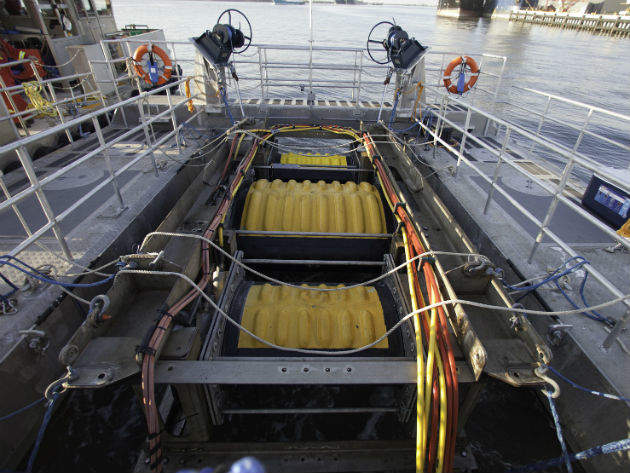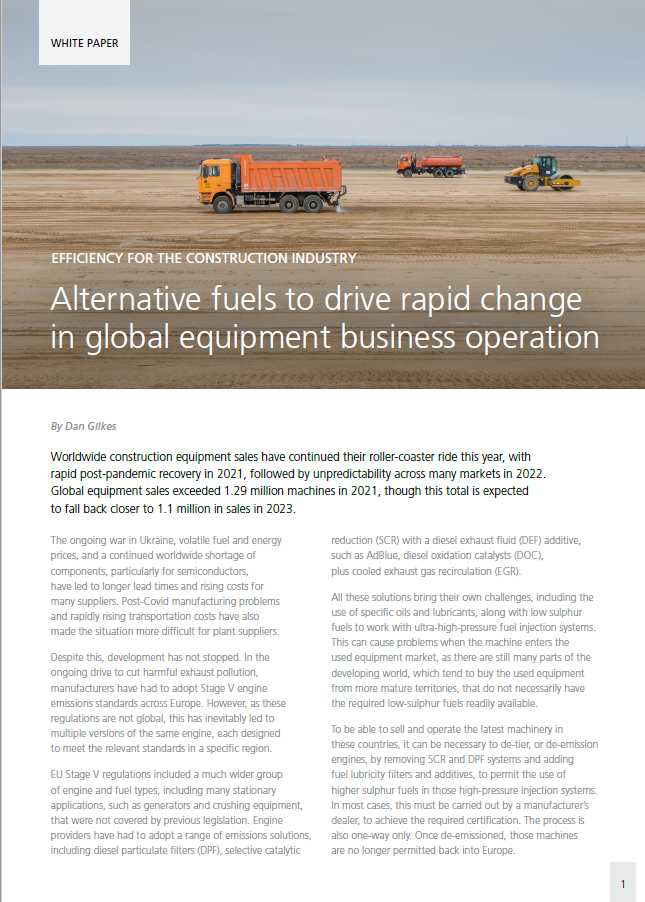
 Airguns have been an essential part of subsurface exploration in the oil and gas industry for over fifty years. By sending seismic waves down through the sea, they can collect data based on how these are reflected back allowing the construction a map of what lies below the sea floor. Little change has been made in the use of the technology throughout the years – until now.
Airguns have been an essential part of subsurface exploration in the oil and gas industry for over fifty years. By sending seismic waves down through the sea, they can collect data based on how these are reflected back allowing the construction a map of what lies below the sea floor. Little change has been made in the use of the technology throughout the years – until now.
Geokinetics has successfully completed the second deployment of its new alternative to the airgun, the AquaVib. The marine vibrator works on a similar principle as the airgun, but with some key differences, especially regarding the sound level.
“The difference is that a typical airgun puts all its energy into the water over a fairly short time period,” explains Geokinetics vice president of business development and technology John Archer. “It's what we call an impulsive source. All of the energy of the expanding air bubble is released over a time span of about 50 milliseconds.”
The short blasts have been associated with numerous concerns, in particular the effect they have on marine life. The added subsea noises are thought to damage the hearing of mammals in particular, disrupting communication patterns and detrimentally changing their behaviours.
“The AquaVib is a continuous or intermittent source – it puts about the same amount of energy into the water, but does it over a longer time period, so the sound level at any point in time is very low,” says Archer.
How well do you really know your competitors?
Access the most comprehensive Company Profiles on the market, powered by GlobalData. Save hours of research. Gain competitive edge.

Thank you!
Your download email will arrive shortly
Not ready to buy yet? Download a free sample
We are confident about the unique quality of our Company Profiles. However, we want you to make the most beneficial decision for your business, so we offer a free sample that you can download by submitting the below form
By GlobalDataSee Also:
The second key difference is the size of the AquaVib, which is a fraction of the cumbersome airgun. “One of our drivers for developing the marine vibrator is that airguns just don't work particularly well in some of the very shallow water areas, what we call the transition zone,” says Archer. “Airguns need fairly large vessels to move them around because they have very heavy compressors and so on, so they have trouble manoeuvring in shallow water, anything less than 5m depth.”
Focusing on shallow waters
As the oil industry experiences a period of uncertainty there is an increasing focus on greater exploration of shallow waters. During the oil boom, companies could afford to invest heavily in projects in deep waters, which have a far slower rate of return but are more profitable. Following the oil price crash in 2014, many companies have to take a different approach.
Shallow waters are traditionally unexplored for a number of reasons. “One reason is because it's extremely difficult to get high quality data in there,” says Archer. “It's a very noisy environment from a geophysical point of view, compared with deepwater exploration.”
Operating within shallow waters provides its own set of challenges as the tides, along with sand banks and mud flats, inhibit access. This means operations often take longer and cost more than in the deep sea.
A further barrier lies in the delicate nature of many shallow ecosystems. “Because there are so many environmentally sensitive ecosystems in the shallow waters the restrictions that the governmental organisations place on exploration in this zone can be extremely high – and rightfully so,” says Archer. “There are some parts of the world where it can take years to get a permit to acquire data in the shallow water [of] coastal regions.”
The AquaVib counters many of these problems due to its size, enabling greater exploration of shallow areas, as the 16ft by 9ft marine vibrators can be towed along flat in the water without disturbing the ecosystems below. They are designed to work in groups of around a dozen units, on autonomous catamarans which can survey the seafloor in areas of water as shallow as 2m.
Does the airgun hurt marine life?
Various environmental organisations, such as Oceana, believe blasts of high-decibel sound waves of damage animal hearing and change their behaviour.
In particular, there has been concern about the effect on baleen whales. This marine superfamily includes blue and humpback whales, which rely on sounds to communicate over hundreds of miles. Impeding this communication, both by adding to the mix of subsea noise and damaging the hearing of creatures closer to blasts, particular through impulses of over 160 decibels, means they cannot communicate as they normally would, potentially forcing them to change their foraging paths and breeding habits.
This concern is backed by publications such as Impacts of anthropogenic noise on marine life: Publication patterns, new discoveries, and future directions in research and management from 2015. Using six case studies it analyses the effect of underwater noise from a number of sources including seismic surveying.
“The case studies build a compelling case that a number of anthropogenic noise types can affect a variety of marine taxa,” the report states. “They show that non-injurious effects can still accumulate to have population-level impacts mediated through physiological impacts and probably other mechanisms.” It stresses that it is not simply direct injury to the animals that needs to be considered, but the wider effects of an increasingly noisy underwater environment.
But the effects of the airgun have been contested, and the U.S. Department of Interior’s Bureau of Ocean Energy Management (BOEM) released an Environmental Impact Statement in 2014 declaring that based on its research the damage caused by airgun use is minimal.
“There’s a lot of inflammatory, non-scientific talk in the media about seismic ‘blasting’, ‘cannons’, and ‘jet engines’ and things like that, which is really unhelpful,” says Archer.
Geokinetics did not design the AquaVib to counter the environmental concerns; however it does provide an alternative that it claims poses no danger to marine mammals, such as whales. “The fact is that this incorrect perception exists so there has been a push to develop a different source, and the marine vibrator is probably the leading contender for that,” says Archer.
“There aren't really environmental problems associated with airguns per se, however they do have a PR issue stemming from the way in which they’re portrayed by certain groups in the media,” he adds. “They've certainly got a bad reputation, even though from all the science that has been done on them they've never been shown to harm marine animals.”
The debate is mostly around whether or not the seismic surveys will affect the animals’ behaviour, to what degree and whether that is acceptable. The argument is hampered by the lack of long-term research. The ocean is vast, as is the range of animals within it, many of whom we know very little about. Therefore fully understanding the extent of the effect of seismic activity is a complex and difficult task.
“What is needed next is a conversation with policy makers about severity of effects from noise of varying type, frequency, intensity and duration to facilitate the setting of quantitative allowable harm limits, and viable approaches to provide these,” suggest the authors of Impacts of anthropogenic noise on marine life.
Financing concerns
Geokinetics says that the AquaVib is now ready for production, but financing may hold it back. “I think the biggest challenge is funding,” says Archer. “We've funded it entirely ourselves up to this point, with the only exception being this last test that we did which was actually underwritten by industry.”
The company is planning to apply to the industry and government for help with funding, but there is competition. “Part of the problem is that industry has a competing initiative,” explains Archer. “They have formed a joint industry programme for marine vibroseis development focussed primarily on towed streamer operations and are funding three different manufacturers to try to produce a marine vibrator hopefully within the next few years.”
That project, however, is unlikely to provide the same access to shallow waters, and importantly the AquaVib is ready now. It has a jump on the market, and the fears associated with the airgun are still likely to encourage demand for alternative sources of data. All that’s left now is to find funding.




